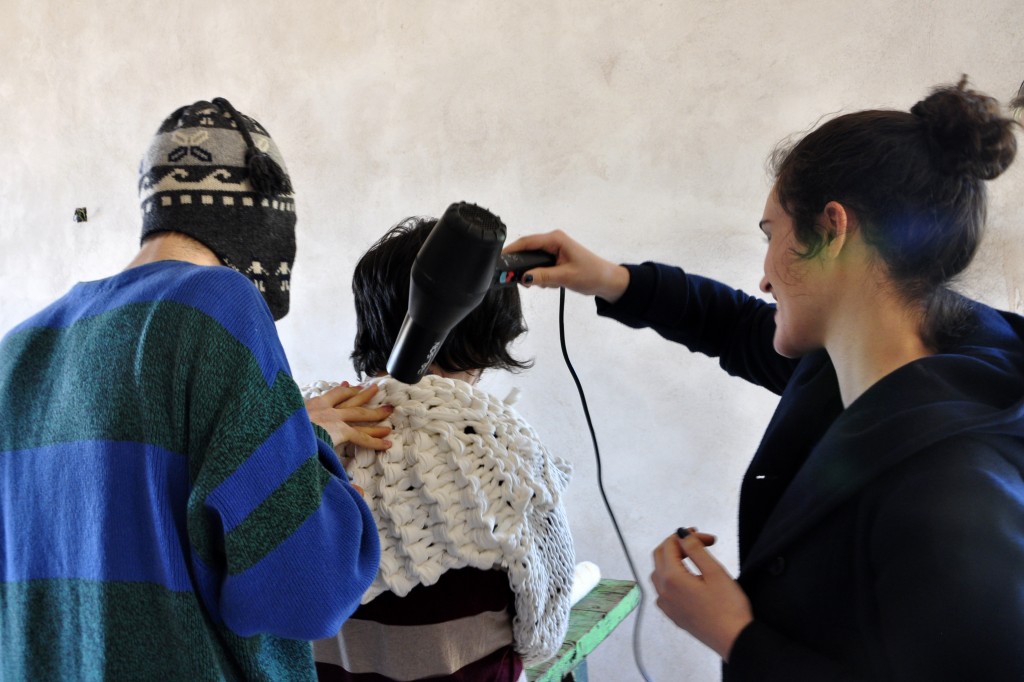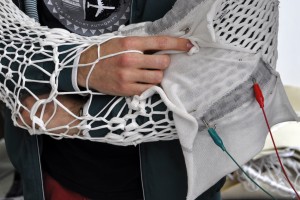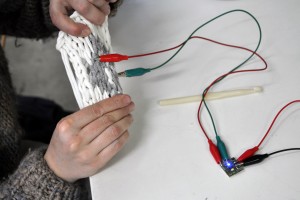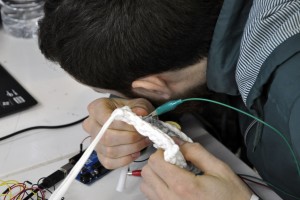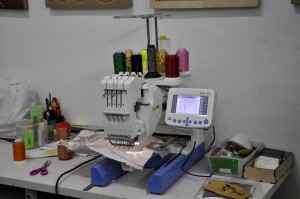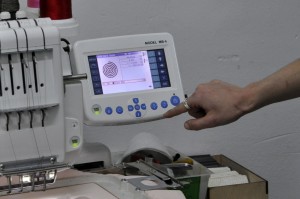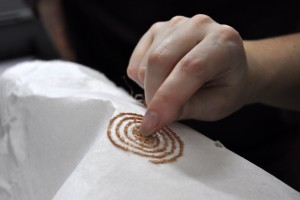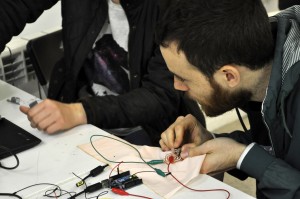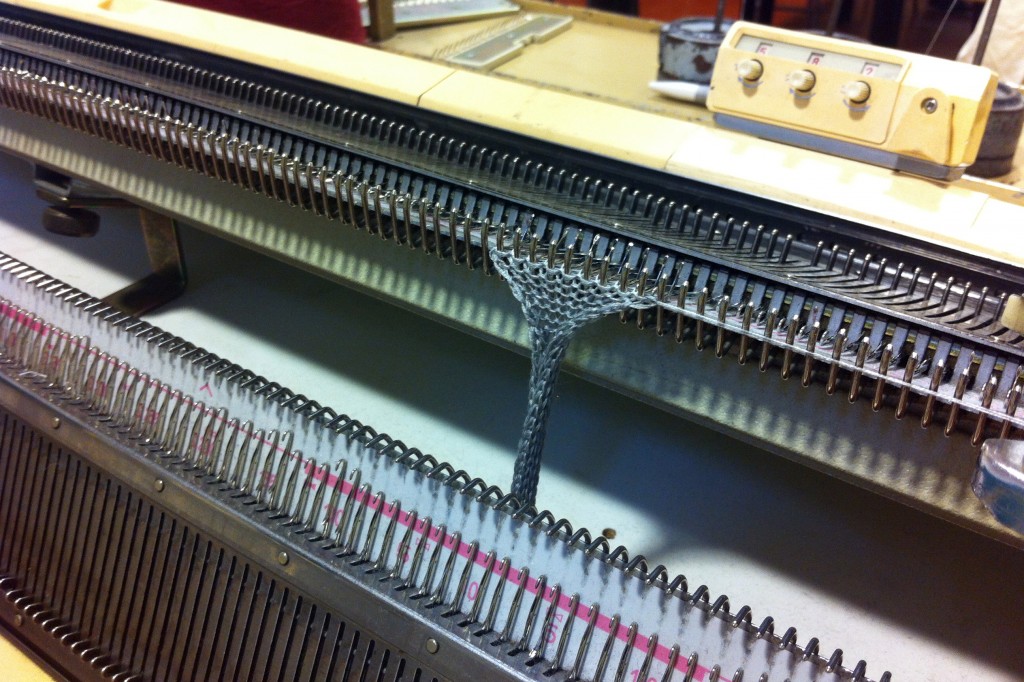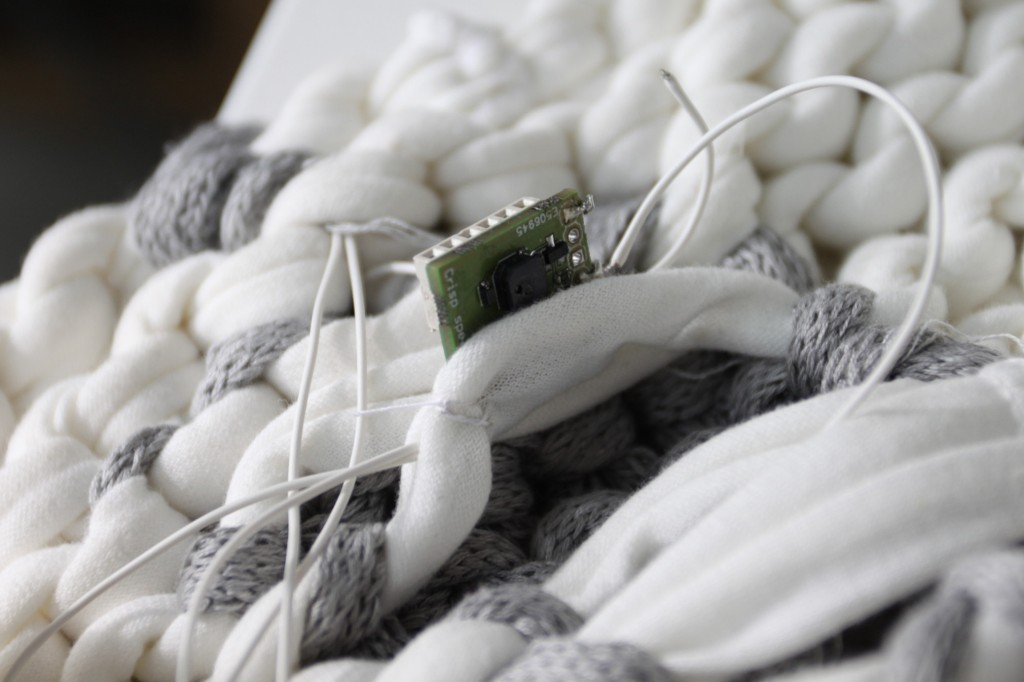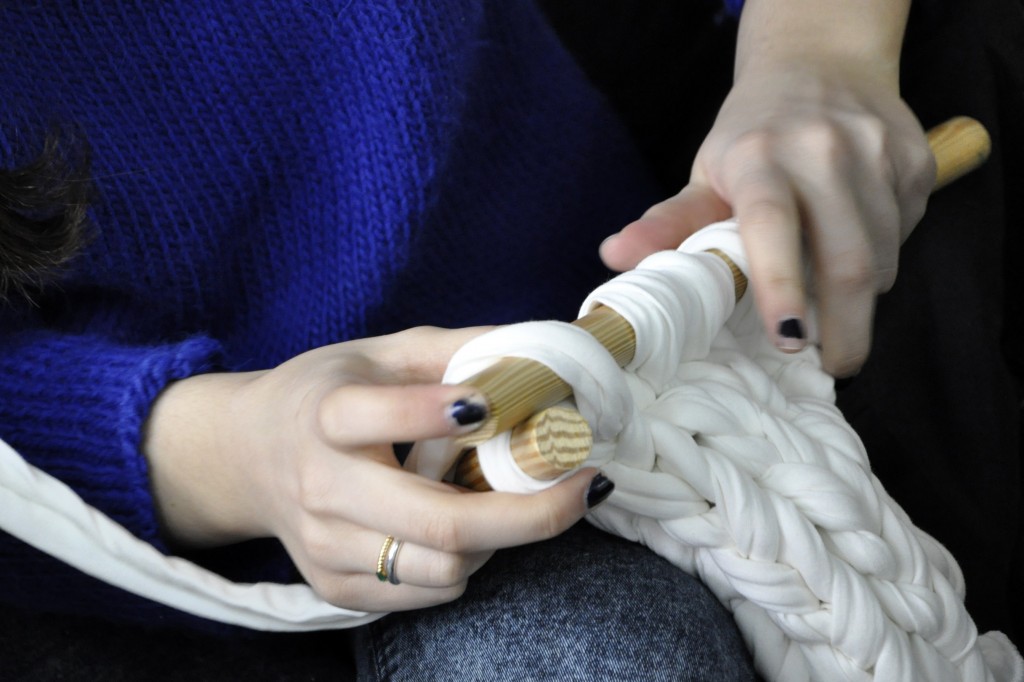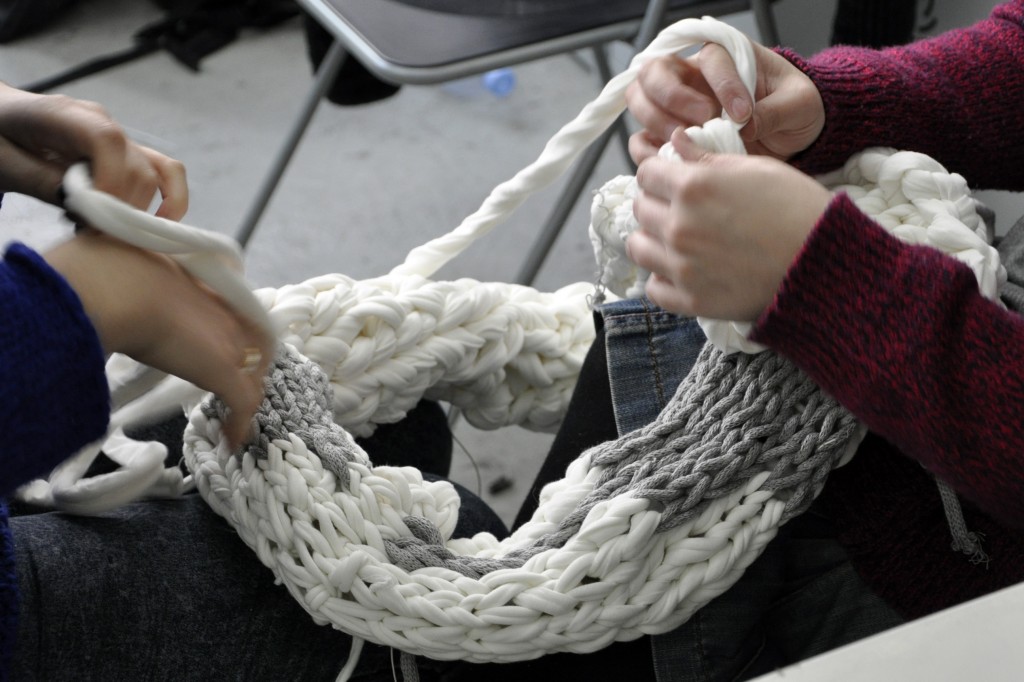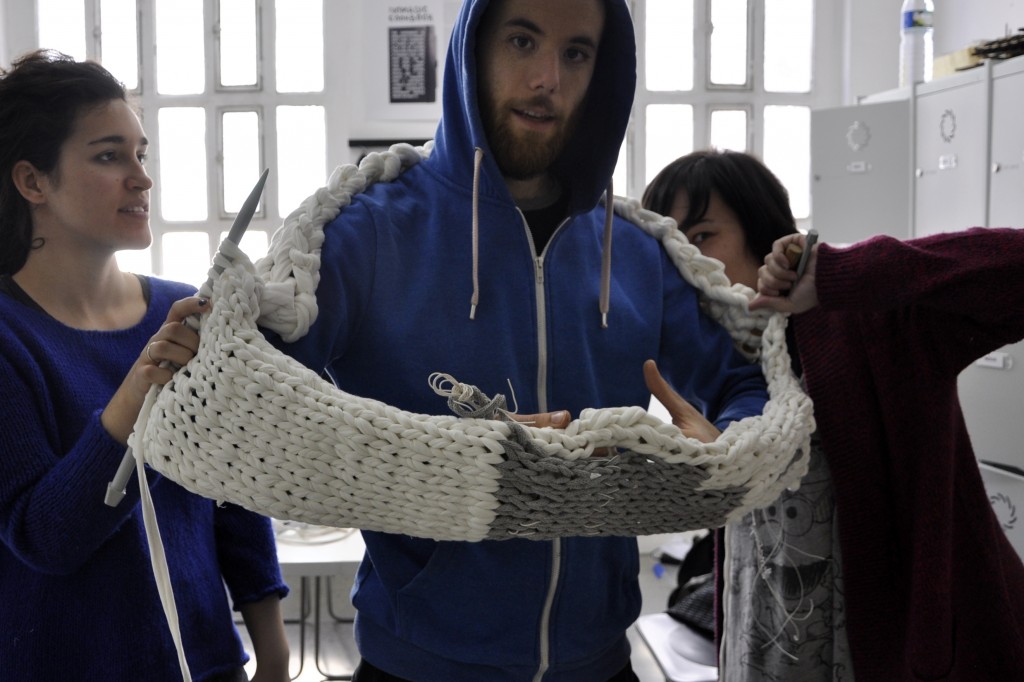Close to the body second week. Adding electronics
Second week’s task was to integrate electronics to existing garments thus improving their qualities.
Our idea was to augment experience of using garment by adding phonic layer. Physical perception of movement change is ingenuously linked to auditory sense. It connects physical and emotional experience and creates broadened sensual empathy. Motion remains as a key factor. Soundscape varies depending on intensity, expression, sharpness and speed of movements. Different sound expressions could be created while dancing, embracing or exploring surroundings with minor moves of fingertips.
PROCESS:
day one in Valldaura. Concept development. How interactive features could supplement existing characteristics of the garment. Trying out prototype with invoked reflections. Vibration, thermal were few considerations of possibe reflections. But final decision was tointegrate soundscape into our garment. Different people use it for different purposes: dancing, exploring, performing etc. The common thing that links all activities is streching particular parts of and changing density of the knit. Sound as output reflects to movement and intensity of streching.
day two in Iaac. First testing of electronics and it’s interaction with movenents. The most active parts are elbows and palms. Developing more these parts. First tests were made using light sensors and conductive threads. As one of options to convey sound and smoothly integrate it into garment was using textile speakers. Using copper threads coil shape was embroidered on the fabric to test it. However, it appeared that more efforts are needed to develop this idea so we decided to use chrisp speakers for the first tests.
day three in ESDi. Developing physical part of prototype. Weaving conducting yarns.Re-making jersey threads for new knit. Knitting. Integrating wires into weaved conductive tubes. Combining both threads – conductive and jersey. Deciding futher development.
day four in IaaC and ESDi. Continuing developent of electronic and physical prototype parts. Testing properties of combined threads. Multimiter showed that characteristics are very sensitive and wide range of values are obtained by stretching conductive knit. Working with sound. Crisp speakers were integrated in the knit, so the sound comes from it’s stretching parts. Crisps were programmed to change the sound pace depending on how much the fabric is stretched. Sound duration was selected very short to create peeping (and least annoying) effect. For the prototype sensors will be integrated in the arms to check how sound works together with body movement.
day five in IaaC. Finalizing and presenting prototype. Finishing new prototype’s knit, programming crisps according to new it’s features. Assembling everything together. Integrating crisps and batteriy into knit. Two chrisp speakers were integrated in most stretching parts of the knit: one where palms and other on the elbow. Testing prototype with both speakers in the garment. Making video and recording sounds. Presenting and testing final prototype of second week.
SUMMARY OF SECOND WEEK’S PROTOTYPE
used components
- knitted prototype from first week
- electrically conducting yarns
- wires
- crisp speaker
- battery
- arduino uno
reached goals
- To verify potency of material. Obtained soundscape is basic and conceptual. It was made to test textile possibilities and response to body motion.
- Organically integrate electronics into garment. Wires were hided inside weaved tubes from electrically conducting yarns. To obtain flexibility and prevent internal breakdowns, integrated wires were longer that weaved tubes. Thus some space was left for stretching the knit.
- To get sound crisp arduino modeules were used. It is small size, easily integrated into the garment modules with speakers.They are hided in jersey threads and isolated from conducting yarns.
futher developments
- Improving quality and level of soundscape. Stronger speakers could be integrated directly in the garment. Other option is transmitting values from sensors to create spatial sound effects by using more than two speakers.
video of the process
video of the second prototype
project made by: Gerda Antanaityte, Sara Gil, Cristina Real, Gerard Rubio
photos and videos: Oscar Tomico, Gerard Rubio, Gerda Antanaityte


